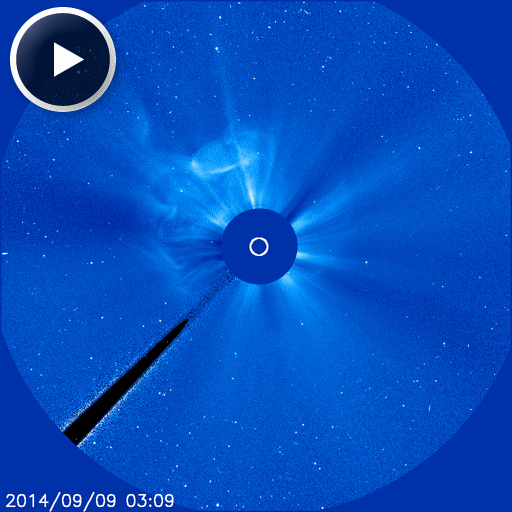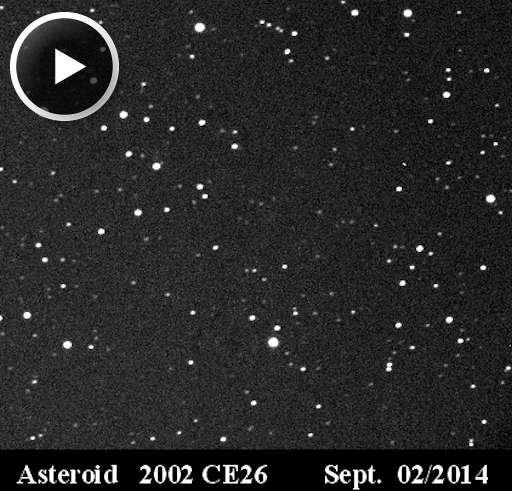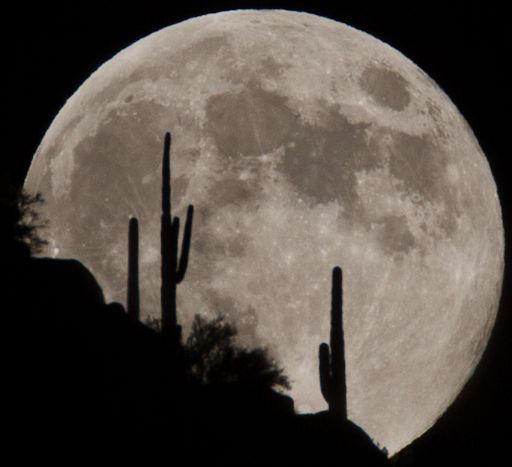LONG DURATION FLARE AND EARTH-DIRECTED CME: Earlier today, the magnetic canopy of sunspot AR2158 erupted, producing an explosion that lasted more than 6 hours. The flare peaked on Sept. 9th at 00:30 UT with a classification of M4 on the Richter Scale of Solar Flares. Long-duration flares tend to produce bright CMEs, and this one was no exception. Coronagraphs onboard the Solar and Heliospheric Observatory observed a CME racing out of the blast site at nearly 1,000 km/s (2.2 million mph):
Most of the storm cloud is heading north of the sun-Earth line, but not all. A fraction of the CME will deliver a glancing blow to Earth's magnetic field, probably during the late hours of Sept. 11th or early hours of Sept. 12th.
ASTEROID FLYBY TODAY: A strange and interesting asteroid is flying past Earth today. 2002 CE26 is a binary system consisting of a primary space rock 3.5 km in diameter orbited by a moon about one-tenth as wide. The strange thing is, radar data suggest that the asteroid's moon might have an even smaller moon of its own. Alberto Quijano Vodniza of the University of Narino Observatory in Colombia photographed the potentially-triple system streaking through the constellation Pegasus on Sept. 2nd:
At closest approach on Sept. 9th, 2002 CE26 will be 18.4 million km (0.123 AU) from Earth. That is relatively far away, but because of the asteroid's large size, it is still possible to obtain meaningful data from the flyby. NASA astronomers will be pinging the system using the Goldstone radar in the Mojave desert. The Goldstone team says "we should be able to get coarse-resolution images of the primary. Echoes from the secondary will be weak and on the edge of detectability."
HARVEST MOON: The northern autumnal equinox is less than two weeks away. That makes today's full Moon the "Harvest Moon"--i.e, the full Moon closest to the beginning of Fall. Last night, Bill Vaughn photographed the waxing Harvest moonrise over Pinnacle Peak, Arizona:
"The rain finally cleared in the Phoenix area, making way for a super moonrise." he says.
The name "Harvest Moon" harkens back to a bygone era. Before the days of electric lights, farmers relied on moonlight to harvest crops which ripened all at once in autumn. They couldn't afford to stop working at sunset, so "harvest moonlight" was essential to their operations. The flow of electricity has made the Moon obsolete as a source of practical illumination, but not as an object of beauty. Step outside tonight at sunset, look east and enjoy the view. - SpaceWeather



